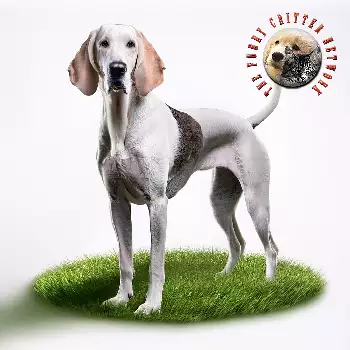The behavioral characteristics of the Posavaski Gonic reflect their deep-rooted heritage as working scent hounds, combining remarkable focus and determination when engaged in tracking activities with gentle, affectionate temperaments in family settings. Understanding these behavioral traits helps owners provide appropriate guidance and outlets for the breed's natural instincts while fostering harmonious relationships in domestic environments.
Scenting behavior represents the most prominent and distinctive aspect of Posavaski Gonic temperament. These dogs demonstrate intense concentration and persistence when following scent trails, often becoming completely absorbed in their tracking work. This focus can be so strong that they may appear to ignore commands or environmental distractions while working a scent, requiring owners to understand and respect their dogs' natural drives while maintaining appropriate control and safety.
Social behavior within the family context reveals the breed's gentle and affectionate nature. Posavaski Gonic typically form strong bonds with their human families, showing loyalty and devotion that extends across all family members. They generally display patient, tolerant attitudes toward children and demonstrate protective instincts without aggressive tendencies, making them suitable companions for families seeking dogs with both working heritage and domestic compatibility.
The breed's pack-oriented background influences their interactions with other dogs, generally resulting in cooperative and non-aggressive social behavior. Posavaski Gonic usually integrate well into multi-dog households and often enjoy the companionship of other dogs. Their experience working in hunting packs translates to understanding of social hierarchy and appropriate interaction patterns with canine companions.
Exercise and activity needs strongly influence Posavaski Gonic behavior patterns. These dogs require substantial daily exercise and mental stimulation to maintain psychological balance and prevent development of problematic behaviors. Insufficient exercise often leads to restlessness, excessive vocalization, and destructive tendencies as the dogs seek outlets for their abundant energy and working drives.
Vocalization represents a natural and significant behavioral characteristic of the breed. Posavaski Gonic possess strong voices and natural tendencies to bark and bay, particularly when excited, following scents, or alerting to unusual activities. This vocal nature requires understanding and management from owners, especially in urban or suburban environments where excessive barking may create neighborhood concerns.
Independence and decision-making abilities characterize the breed's approach to problem-solving and daily activities. Posavaski Gonic were bred to work with minimal human direction while tracking, developing strong independent thinking capabilities. This independence can manifest as occasional stubbornness or selective hearing, particularly when the dog's instincts conflict with human commands.
The breed demonstrates remarkable persistence and determination when pursuing objectives, whether following scent trails during walks or investigating interesting smells in the environment. This persistence, while valuable in working contexts, requires management in domestic settings to prevent unwanted behaviors such as persistent begging, excessive investigation of food sources, or relentless pursuit of small animals.
Alertness and environmental awareness characterize the breed's daily behavior patterns. Posavaski Gonic remain naturally attentive to their surroundings, quickly noticing changes in their environment or the approach of strangers. This alertness makes them effective watchdogs without requiring specific guard dog training, though their typical response involves barking rather than aggressive confrontation.
Stress responses in Posavaski Gonic often manifest through increased vocalization, restlessness, or attempts to escape and explore. Understanding these stress signals helps owners recognize when their dogs need additional exercise, mental stimulation, or environmental modifications to maintain emotional balance and prevent behavioral problems from developing or escalating.
Learning behavior reflects the breed's intelligence and eagerness to please, though their independent nature sometimes requires patient, consistent training approaches. Posavaski Gonic respond well to positive reinforcement methods and fair, consistent handling, but may resist harsh corrections or overly repetitive training sessions that fail to engage their intelligent, problem-solving minds.

